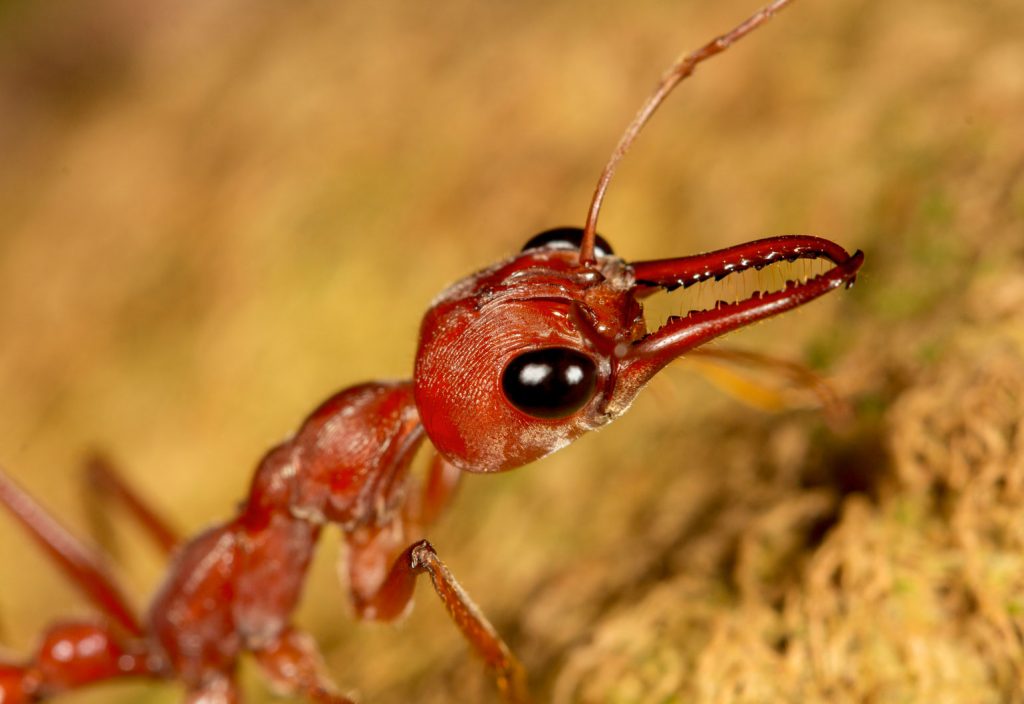Giant red bull ants are infamous for their excruciating sting, but a team of Australian researchers thinks their venom holds the key to chronic pain relief.
According to Pain Australia, around one in five Australians is living with chronic pain, and this is expected to rise as the population ages.
As a first step to developing more effective treatments, Dr Samuel Robinson from University of Queensland is studying giant red bull ant venom. He explained this complex chemical is closely related to bee and wasp stings, and directly targets human pain-sensing neurons.
“That means we can use animal venoms to study the human nervous system and learn more about how pain travels through the body and how to develop compounds that block it,” Robinson said.
More than one attack
Researcher Dr Eivind Undheim from University of Queensland’s Centre for Advanced Imaging said although ants were widespread and known for their ability to deliver a nasty bite, not many scientists have conducted studies of their venom. Instead, research has focused on bee and wasp toxins.
Undheim added this was most likely because ants – and the volume of venom they produce – is relatively small. Some species, such as sugar ants, defend themselves with simple formic acid-based compounds. However the researchers found that giant red bull ants have another trick up their sleeves.
“Our study revealed that the venom of the giant red bull ant is composed of a suite of peptide toxins, and that these are closely related to those found in the venoms of bees and wasps,” Undheim said.
The University of Queensland study, published by Science Advances in September, used fluorescent dyes to confirm that two of three peptides isolated from giant red bull ant venom caused calcium ions to leak through mammal cell membranes, indicating that these chemicals contribute to the pain experienced by ant bite victims.
The presence of more than one pain-producing peptide is interesting as other insect stings, including the European honeybee’s, contain only one. The researchers suggested that a possible explanation is that ant venom peptides might select for different types of tissue or cell types.
If this hypothesis holds true, the researchers said peptides from ant, bee and wasp toxins could potentially be used in applications such as antimicrobial or anticancer drugs.
Magnetic relief
Another novel approach to relieving pain has been trialled by bioengineers from University of California, Los Angeles (UCLA). A team led by by Professor Dino Di Carlo has used tiny magnetic particles suspended in gel to control cell proteins that contribute to the sensation of pain.
Di Carlo explained that although pharmaceutical treatments are the focus of modern medicine, recent breakthroughs have opened up the possibility of using physical forces to “kick-start” helpful changes in cells.
“There’s a long way to go, but this early work shows this path toward so-called ‘mechanoceuticals’ is a promising one,” he added.
In their study, published in Advanced Materials, the researchers drew dorsal root ganglion neurons in a biocompatible gel containing magnetic particles. They used magnets to apply a ‘pulling’ force, which increased the concentration of calcium ions in the neurons – indicating a pain response. But when the force was increased steadily over time, the neurons adapted and decreased their pain signals.
According to researcher Dr Andy Kah Ping Tay, these results show that taking advantage of the body’s neural network homeostasis (tendency to return to to a stable state) can help lessen the signals of pain through the nervous system.
“Ultimately, this could lead to new ways to provide therapeutic pain relief,” Tay added.
As well as pain relief, the UCLA researchers suggested their mechanoceutical gel could be modified to treat heart or muscle problems.
